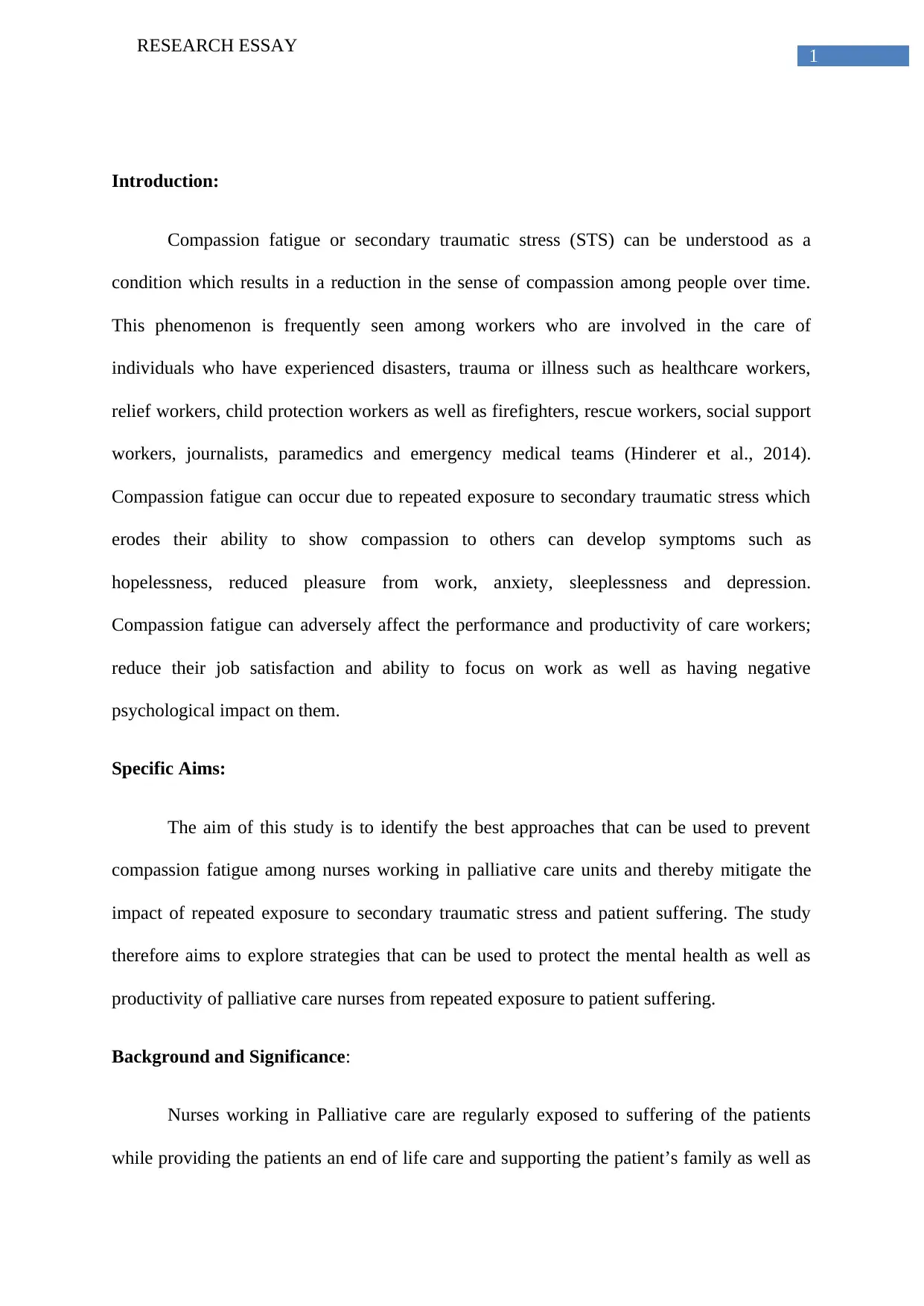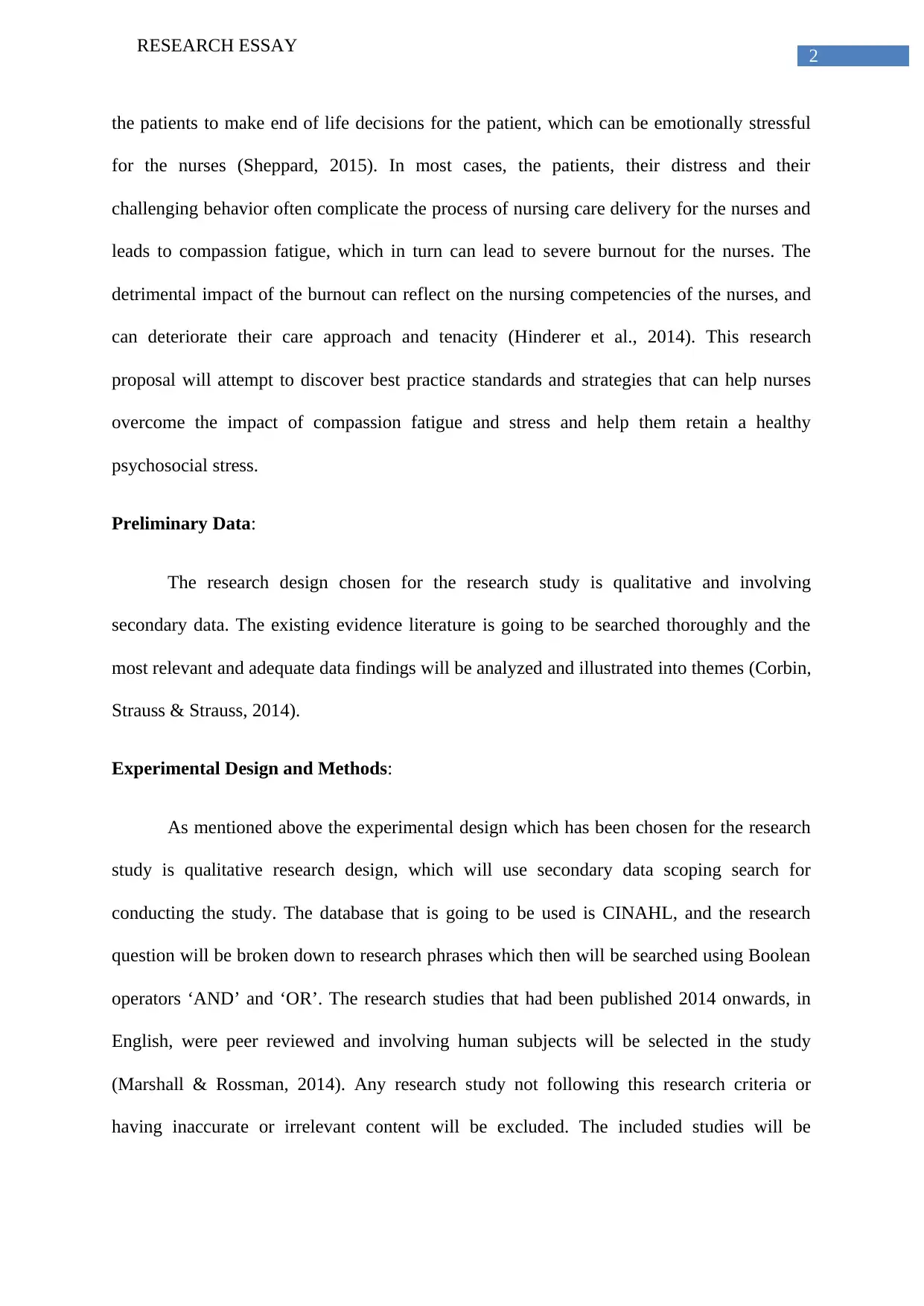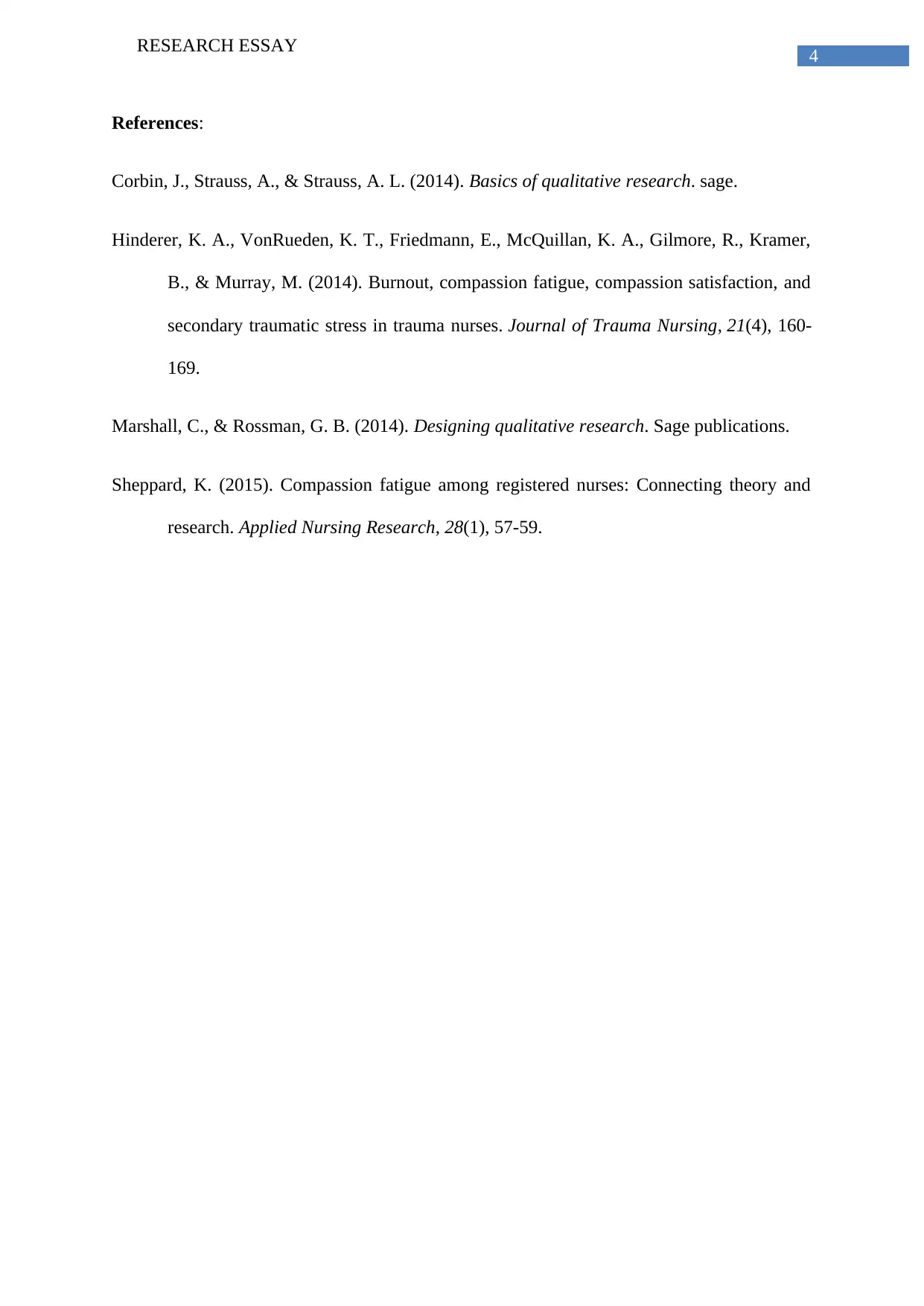Compassion Fatigue in Palliative Care Nurses: Research Essay
VerifiedAdded on 2023/04/23
|5
|789
|332
Essay
AI Summary
This research essay investigates compassion fatigue, or secondary traumatic stress, among palliative care nurses. It identifies the adverse effects of compassion fatigue, including burnout, reduced job satisfaction, and psychological impacts. The study aims to determine effective strategies to prevent compassion fatigue in palliative care nurses, protecting their mental health and productivity. Using a qualitative research design with secondary data analysis, the essay explores existing literature, focusing on studies published from 2014 onwards, to identify best practices and interventions. The research will analyze and categorize the findings into themes to provide a comprehensive understanding of the issue and potential solutions. The essay highlights the emotional challenges faced by palliative care nurses and the importance of supporting their well-being to ensure quality patient care.
1 out of 5












![[object Object]](/_next/static/media/star-bottom.7253800d.svg)